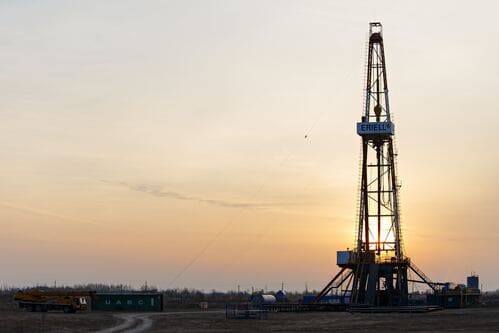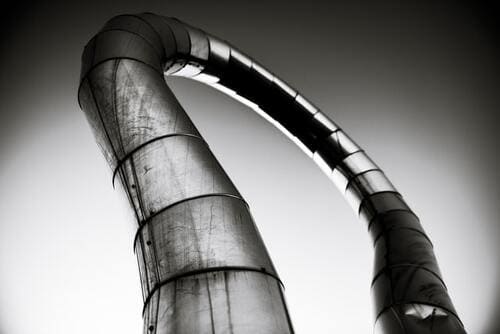Specialists have already found a series of applications where fiber Bragg gratings have shown to be profitable. FBG sensors have become a reliable distributed sensing solution for structural health monitoring. In addition to other applications, such as in the biomedical field, they are also used in civil engineering and geotechnical engineering.
All these areas have one thing in common – the environmental conditions. In such environments, it’s difficult to prevent the degradation processes such as aging and chemical effects. These factors should also be taken into account when implementing the traditional monitoring systems or equipment. In most cases, they have a short service life and require frequent replacement.
Alternatively, fiber optic sensors deliver modern fiber optic solutions that are able to work in extreme environments.
Fiber Bragg Grating Sensors Common Characteristics
Since their first implementation, FBG sensors have been broadly deployed especially for distributed sensing of temperature, strain, and other characteristics that are particularly valuable in geotechnical and civil engineering. Fiber optic sensors have become world renowned for the features they offer. High sensitivity, immunity to electromagnetic interference are the most important parameters that are in demand.
Like traditional sensors, FBG interrogators face similar challenges. For example, they are usually required in extremely accurate equipment. That’s why there’s a high demand for maximum precision and high spectral resolution, down to picometer level. Fiber optic devices are also increasingly being used to deploy in rugged environments.
Fiber Bragg gratings are compact and can provide stable operation and durability in outdoor environments. For example, they are typically exposed to moisture influences, chemical reactions, temperature variations, etc. Distributed sensing systems should meet all the necessary requirements to ensure safety and proper operation of the entire system and to avoid the consequences of the interaction of the sensing element with the environment.
To ensure that, fiber optic systems should have robust materials and construction. In addition to complete, reliable fiber optic systems, fiber optic cables play a crucial role in creating the long-term FBG structural health monitoring systems. All fiber optic sensors should be able to withstand a certain level of thermal and mechanical loads at all times. The only way to provide customers with the best fiber optic solution is through testing of FBG sensors and application methods.
FBG Inscription Methods
Depending on the application and environmental conditions in which the FBGs are to be used, specialists can design FBG sensors for individual customer parameters.
A fiber Bragg grating is a fiber optic microstructure in which the index of refraction within the optical core changes along its length. The producing process of FBGs is usually called “writing”. Nowadays, there are three FBGs inscription methods:
- The interferometric method is based on exposing a light sensitive area of the fiber to an interferometric fringe pattern to get the full grating. The pattern is achieved by illuminating an appropriate mask. In this case, the phase mask period defines the FBG period.
- Continuous core-scanning method. Here, the FBG writing is provided by the motion of the translational frame where the fiber is fixed. In this technique, the period of the FBG is defined by the modulation frequency and the translation speed of the fiber.
- And the last is the direct point-to-point method based on the absorption of a laser pulse. Each grating element is generated by controlling the laser parameters and moving the fiber. In this technique, the FBG period is determined by the fiber translation speed and the laser pulse repetition rate.
Applications of FBG Sensors
Fiber Bragg grating sensors are used in various fields where it is required to monitor structural health. In engineering, they are used to monitor the integrity of the entire structure and observe any deformation of its components. Such monitoring leads to the reduction of the risks and safety requirements. Fiber optic sensors are particularly useful for reinforced concrete structures because they can provide online data on the risk of corrosion.
When we talk about geotechnical and civil engineering, FBGs have also found their place for implementation.
Here are some examples of how fiber optic technology gets used:
- Concrete structure monitoring;
- Lateral deformation monitoring of embankment soft soil;
- Pressure monitoring of tunnel’s rock and soil;
- Structural health monitoring of bridges, dams, etc.
Nowadays, FBG sensors are also used to monitor landslides and slope failures and have shown good results. Distributed sensing systems have been applied to examine the landslide stability and deformation of landslides. Nevertheless, installing monitoring systems in complex environments and dealing with uncontrollable boundary conditions require careful consideration of potential issues.
Monitoring engineering and geotechnical structures with distributed sensing systems can improve profitability. Structural health monitoring methods are often preferred due to their ability to:
- operate in chemically aggressive environments;
- their feasibility in hard-to-reach areas of structures;
- use fiber optic solutions which reduce equipment costs by utilizing a single fiber optic cable.
Overall, fiber Bragg gratings find extensive use in geotechnical and civil engineering applications. And, as with any technology, the successful implementation of fiber optic technology requires specialized experience and professionalism in designing and implementing the entire fiber optic system. Most of all, when there is a need for long-term measurements.
Optromix is a fast-growing vendor of fiber Bragg grating (FBG) product line such as fiber Bragg grating sensors, for example, FBG strain sensors, FBG interrogators and multiplexers, Distributed Acoustic Sensing (DAS) systems, Distributed Temperature Sensing (DTS) systems. The company creates and supplies a broad variety of fiber optic solutions for monitoring worldwide. If you are interested in structural health monitoring systems and want to learn more, please contact us at info@optromix.com









 Special fiber optic technology can make fiber optic cable a sensing one. That solves many challenges including monitoring long units like pipelines, tunnels, or power cables. With the help of fiber optic sensors, it is more likely to find the leak in a short time. FBG interrogator sends a laser pulse through the fiber optic cable and the light comes back to the interrogator. The back scattered light delivers back acoustic, vibration, and thermal data.
Special fiber optic technology can make fiber optic cable a sensing one. That solves many challenges including monitoring long units like pipelines, tunnels, or power cables. With the help of fiber optic sensors, it is more likely to find the leak in a short time. FBG interrogator sends a laser pulse through the fiber optic cable and the light comes back to the interrogator. The back scattered light delivers back acoustic, vibration, and thermal data. According to scientists, nowadays we can see newly developed distributed sensing systems that can have many appliances including monitoring of wells’ conditions in the oil and gas industry. Mostly, distributed acoustic sensing (DAS) is applied in these spheres.
According to scientists, nowadays we can see newly developed distributed sensing systems that can have many appliances including monitoring of wells’ conditions in the oil and gas industry. Mostly, distributed acoustic sensing (DAS) is applied in these spheres.